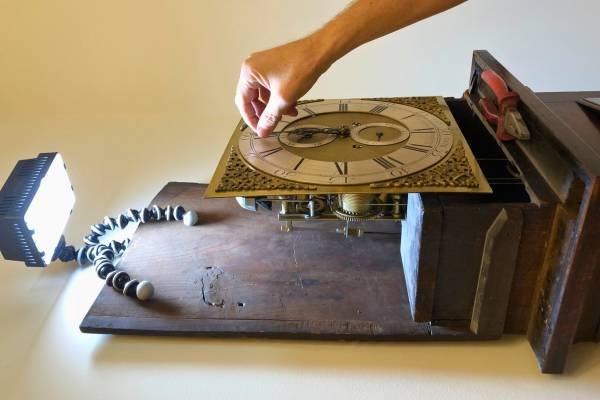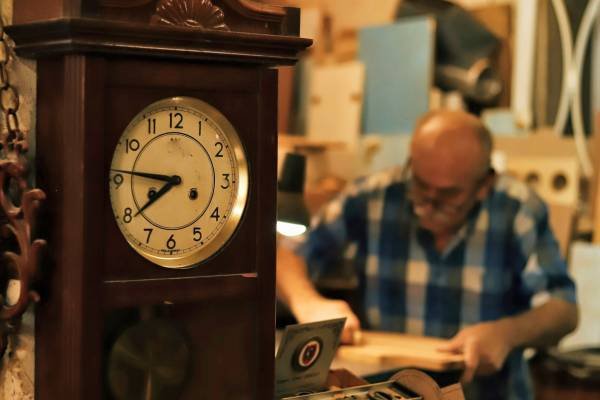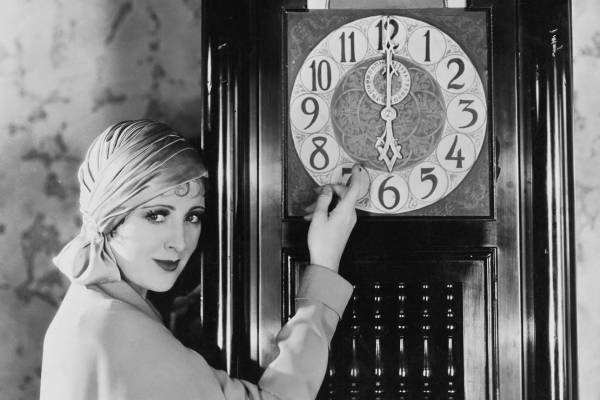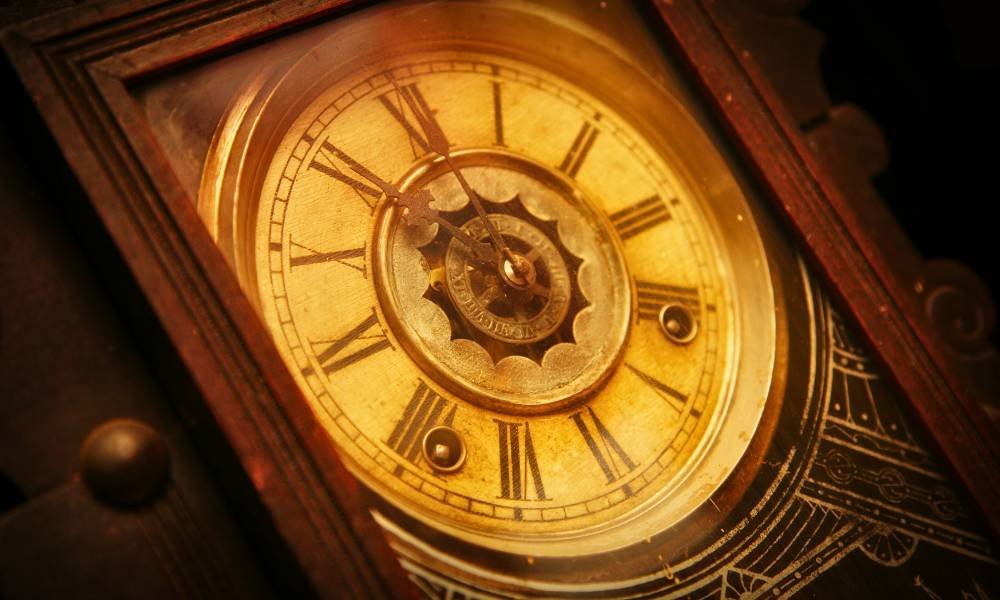Setting the time on a grandfather clock can seem daunting, but with the right guidance, it’s a straightforward task. In this article, “How to Set Time on Grandfather Clock,” we will walk you through each step to ensure your clock runs accurately and smoothly. Whether you’re a novice or a seasoned clock owner, our easy-to-follow instructions will help you maintain the charm and functionality of your cherished timepiece. From stopping the pendulum to synchronizing the chimes, we’ve got you covered. Keep your grandfather clock ticking perfectly with our expert tips and enjoy its timeless beauty in your home.
How to Set Time on a Grandfather Clock: An Effective Guide
- Clock Mechanism: Key Components and Understanding the Mechanism.
- Safety Precautions: Ensure stability and handle parts carefully.
- Stop the Pendulum: Safely stop the pendulum before adjusting time.
- Adjust Hands: Move the minute hand clockwise; synchronize the hour hand with chimes.
- Restart Pendulum: Properly restart the pendulum, ensuring balance.
- Final Checks: Ensure accuracy and follow maintenance tips for optimal performance.
Understanding the Clock Mechanism

Understanding the clock mechanism is crucial when learning how to set the time on a grandfather clock. The basic components include weights, pendulums, and chimes. Weights drive the watch’s movement, the pendulum regulates the timekeeping, and chimes mark the hours. Knowing how these parts interact ensures you set the time accurately without damaging the watch. Properly understanding the mechanism allows for precise adjustments and helps maintain the clock’s longevity. By familiarizing yourself with these elements, you can confidently handle and set your grandfather clock, ensuring it continues to function beautifully and accurately.
Safety Precautions
When setting the time on a grandfather clock, safety is crucial. Ensure the watch is on a stable surface to prevent it from tipping over. Carefully handle the weights and pendulum, as these components are delicate and essential for accurate timekeeping. Before making any adjustments, stop the pendulum gently to avoid damaging the clock’s mechanism. Once the pendulum is stationary, you can proceed with adjusting the time. Always move the minute hand clockwise and align the hour hand with the chimes. Restart the pendulum carefully, making sure it swings evenly. Regular maintenance and careful handling will keep your grandfather’s clock running smoothly.
Stopping the Pendulum
Stopping the pendulum on a grandfather clock is a crucial step to prevent damage during time adjustments. To safely stop the pendulum, gently grasp it at the center and bring it to a halt without forcing it. This ensures the delicate internal components remain intact. Stopping the pendulum is essential before adjusting the time, as it prevents misalignment and potential mechanical issues. By taking this precaution, you protect your grandfather’s accuracy and longevity, ensuring it continues to function smoothly and beautifully for years to come.
Opening the Clock Face

Opening the clock face of a grandfather clock requires careful handling to prevent damage. First, gather the necessary tools: a soft cloth, gloves, and a screwdriver. Begin by gently wiping the watch face with a soft cloth to remove any dust. Wearing gloves, carefully unscrew the clock face panel using the screwdriver, ensuring not to apply too much pressure. Slowly lift the panel away from the watch, being mindful of any delicate parts. This method ensures the watch face is opened without causing damage, allowing you to proceed with setting the time accurately.
Adjusting the Minute Hand
Adjusting the minute hand on a grandfather clock is a crucial step in setting the correct time. To do this, gently move the minute hand clockwise to the desired time. Avoid moving the minute hand counterclockwise, as this can damage the watch’s mechanism. Ensuring the minute hand is set accurately is essential for the watch to chime correctly and maintain accurate timekeeping. By following these steps, you can keep your grandfather clock running smoothly and reliably.
Adjusting the Hour Hand
Adjusting the hour hand on a grandfather clock is crucial for accurate timekeeping. To synchronize the hour hand with the correct time, gently move it to the appropriate hour, ensuring it aligns perfectly with the chime sequence. This step is vital because the chimes need to correspond to the displayed time. Carefully check that the hour hand is not loose and is precisely positioned. If misaligned, the watch may chime at the wrong time, causing confusion. Proper alignment guarantees that your grandfather clock remains a reliable and elegant centerpiece in your home.
Restarting the Pendulum
Restarting the pendulum on a grandfather clock is a crucial step to ensuring accurate timekeeping. First, gently swing the pendulum to one side and let go, allowing it to start its natural rhythm. Listen for an even tick-tock sound, which indicates the watch is balanced. If the ticking is uneven, adjust the clock’s position slightly until the pendulum swings evenly. Ensure the watch is on a stable, level surface to maintain balance. Properly restarting the pendulum not only keeps your grandfather clock accurate but also preserves its intricate mechanism, ensuring longevity and reliable performance.
Testing the Chimes

To test the chimes on your grandfather clock, begin by setting the time and listening to the chimes at each hour. Ensure the chimes correspond accurately to the correct hour. If the chimes are off, gently adjust the minute hand, moving it forward to the next hour, and then back to the correct time. This process helps synchronize the chimes with the watch’s time. Repeat this until the chimes and hour markings align perfectly. Regularly testing and adjusting the chimes ensures your grandfather clock remains accurate and maintains its timeless charm.
Final Checks and Maintenance Tips
Ensuring your grandfather’s clock keeps accurate time involves a few simple steps. First, monitor the watch for a few days to confirm it maintains the correct time. If needed, make minor adjustments to the pendulum. Regular maintenance includes dusting the clock’s exterior, oiling the moving parts every few years, and checking the weights and pulleys for smooth operation. Keep the watch in a stable environment, avoiding extreme temperatures and humidity. These practices will help your grandfather clock remain a reliable and beautiful timepiece in your home for years to come.
FAQs for How to Set Time on a Grandfather Clock
1. What tools are needed?
✅Usually, no special tools are required; just access the watch face and handle the hands gently.
2. Can I move the hands backwards?
✅No, always move the minute hand clockwise to avoid damaging the mechanism.
3. How often should I adjust the time?
✅Only adjust if the watch runs fast or slow; regular maintenance helps minimize adjustments.
4. What if the clock chimes incorrectly?
✅Move the minute hand clockwise to the next hour and let it chime fully until it is correct.
5. How often should I maintain the clock?
✅Dust and check parts every few months; oil moving parts every 2-3 years.
Conclusion
In conclusion, mastering how to set the time on a grandfather clock ensures its accuracy and longevity. Following the outlined steps, such as handling the hands correctly and maintaining regular checks, will keep your watch in perfect working condition. Regular maintenance, including dusting and oiling, is crucial for preserving its functionality and beauty. Whether you’re an experienced watch owner or a beginner, these tips will help you keep your grandfather clock running smoothly. Understanding how to set the time on a grandfather clock not only enhances its performance but also maintains its charm, making it a treasured centerpiece in your home.
